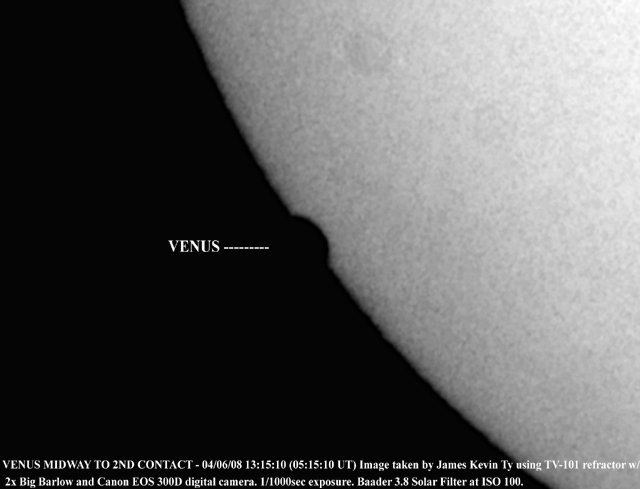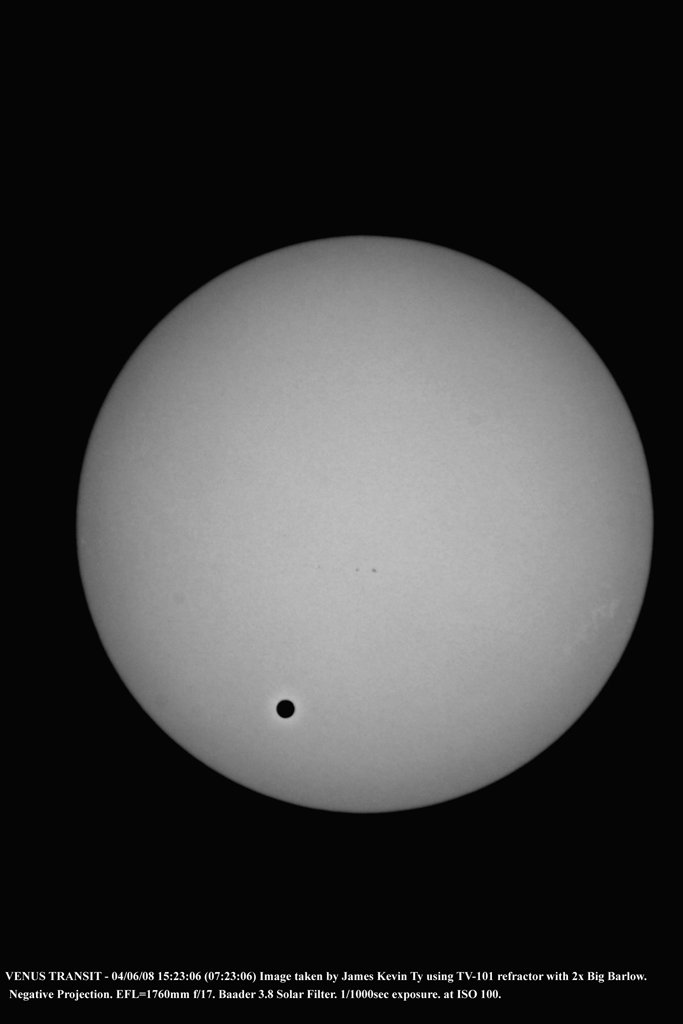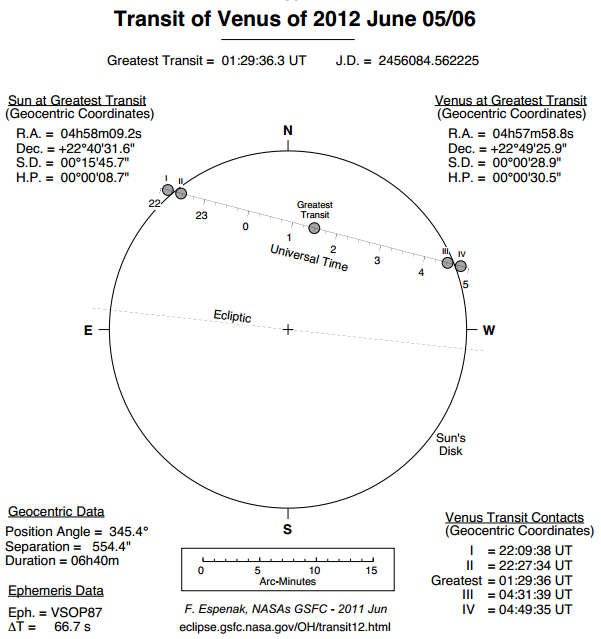|
|
|
It can be safely observed by taking the same precautions used when observing the Sun as well as partial phases of a solar eclipse. CAUTION: Staring at the brilliant disk of the Sun with the unprotected eye can quickly cause serious and often permanent eye damage!!! Some of the safe filter materials to observe the transit are Baader Astro Solar Filter, Glass solar Filter, Welder's Glass #14, Herschel Wedge, solar eclipse viewers. Another safe method to observe this event is the use of solar projection method wherein a telescope or binoculars is used to project the sunlight through the scope into a piece of white paper. This is also a good way for showing the transit to a lot of people at the same time. But be forewarned not to use a reflecting or compound telescope such as a Newtonian , Maksutov or Schmidt-Cassegrain telescope to do solar projection or else mirror coatings will be permanently damaged and ruin your telescope :( Use only a binoculars or a refracting telescope coupled with a cheap eyepiece such as Huygenian, Ramsden, or Kellner eyepiece be used or else by the use of a high quality eyepiece such as Erfle, Naglers, etc, the cemented materials inside these eyepieces can melt and destroy your high quality eyepiece. The principal events occurring during a transit are conveniently characterized by contacts, same as those on the contacts of an annular solar eclipse which happened last May 21, 2012. The transit begins with contact 1, the instant the planet’s disk is externally tangent to the Sun. Shortly after contact I, the planet can be seen as a small notch along the solar limb. The entire disk of the planet is first seen at contact 2 when the planet is internally tangent to the Sun. Over the course of several hours, the silhouetted planet slowly traverses the solar disk. At contact 3, the planet reaches the opposite limb and once again is internally tangent to the Sun. Finally, the transit ends at contact 4 when the planet’s limb is externally tangent to the Sun. Contacts 1 and 2 define the phase called ingress while contacts 3 and 4 are known as egress. Below is the contact times of the June 6, 2012 Venus Transit . All times in Philippine Standard Time (PST) , deduct 8 hours to convert to Universal Time (UT).
Below is an illustration of where Venus will cross on the Sun's disk courtesy of Fred Espenak.
For this event, members of the Astronomical League of the Philippines will join hands with National Museum Planetarium in Rizal Park as well as AstroCamp Observatory in SM Mall of Asia to give free public views of the Venus Transit. For more details, please text / contact ALP President James Kevin Ty at +639178559863 , ALP PRO Armando Lee at +639177922053 or National Museum Planetarium curator Bel Pabunan at +6325277889 for time of setup for the event.
|
|
|
Home |
About the ALP
|
Membership |
Publication |
Convention
|
Archives
|
Links |
Contact
Information
|




